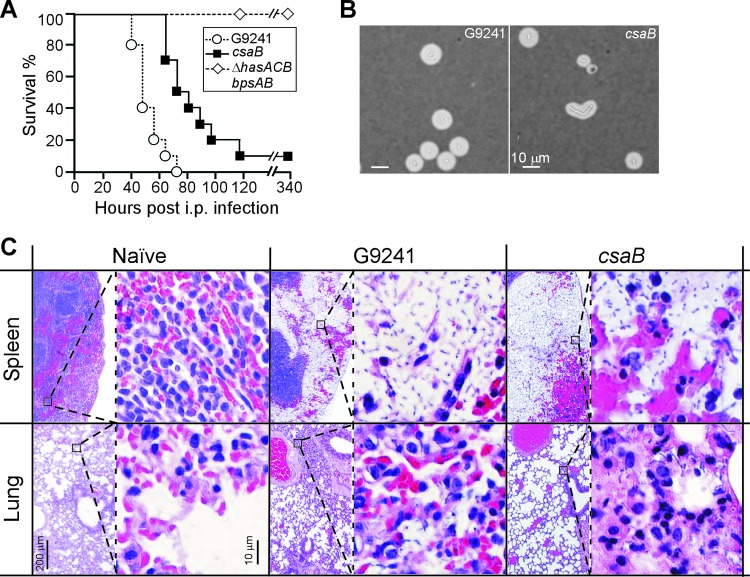Fig 7.
Contribution of the csaB mediated S-layer assembly pathway to the pathogenesis of B. cereus G9241 anthrax-like disease in mice. (A) Survival of cohorts (n = 10) of C57BL/6 mice following intraperitoneal inoculation of (1 × 105) spores derived from B. cereus G9241 wild-type as well as ΔhasACB ΔbpsAB and csaB mutant strains. When analyzed with the log-rank test, the survival of animals infected with the csaB mutant is significantly increased compared to animals infected with the wild-type strain (P = 0.0002). The ΔhasACB ΔbpsAB mutant was avirulent in this model (wild-type versus ΔhasACB ΔbpsAB, P < 0.0001). Data are representative of two independent experimental determinations. (B) Spleen tissue homogenates from animals infected with wild-type B. cereus G9241 or the csaB mutant were stained with india ink and viewed by microscopy. Images are representative of vegetative forms identified in spleen tissues from five different animals analyzed for each group. (C) Naïve (uninfected) or moribund animals (infected with either wild-type B. cereus G9241 or its csaB mutant) were euthanized and necropsied. Lung and spleen tissues were fixed, thin sectioned, stained with hematoxylin-eosin, and analyzed for histopathology features via light microscopy at magnifications of ×40 (left) and ×400 (right). Images are representative of histopathology found in each of five animals per cohort. See the text for details.

